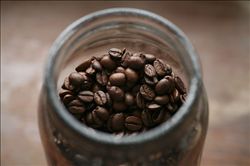Cedar Mochizo Coffee Flavor description of Fruit Tea aftertaste introduction to the treatment method of Grinding degree
It is an outstanding representative of African washed coffee, and has always enjoyed a good reputation in the eyes of coffee connoisseurs all over the world. the rare washed high-quality Elaraby plus coffee is suitable for all degrees of baking, showing a fresh and bright aroma of flowers and fruits, beautiful and complete bean shape. it is a high-end coffee that can not be compared with Mocha. It has unique fruit aromas of citrus and lemon, with aromas of jasmine, sour taste similar to wine, clean and unmixed taste, just like freshly boiled citrus fruit tea with a long finish. Full of floral and citrus aromas, the performance is exciting, moderate roasting has a soft sour taste, deep roasting gives off a strong aroma, rich and uniform taste is the most attractive feature of Ethiopian Yega snow coffee, known as the best coffee beans in Ethiopia, is the representative of East African boutique coffee
Yirgacheffe is from Yirga, a small town in the northwest of Sidamo province. Yirgacheffe coffee raw bean is one of the most distinctive coffee in the world, rare and expensive. It is produced in the plateau of Ethiopia's Sidamo province (2000 meters above sea level). It is an outstanding representative of washed coffee in Africa. It has always been famous in the eyes of global coffee connoisseurs. Rare washed high-quality Elaraby plus coffee, suitable for all degrees of baking, perfectly showing a fresh and bright aroma of flowers and fruits. Beautiful and complete bean shape, is the general mocha incomparable high-grade coffee. With unique aromas of citrus and lemon and aromas of jasmine, it has a sour taste similar to that of wine, clean and unmixed, just like drinking fresh citrus fruit tea with a lasting aftertaste. Ethiopia has two of the best producing areas, Yiragcheffe and Sidamo, of which Sidamo is located in a plateau region in the south of Ethiopia. Sidamo has a balanced acidity and moderate consistency. People there usually have a cup of mocha coffee for breakfast to replenish the spirit and vitality of the day.
As Ethiopia's classification system is still very backward, it can be divided into special grades (usually Yirgacheffe and Sidamo), level 1, level 2, level 3, level 4 and level 5.
In Ethiopia, Japanese beans are usually found, such as small stones or twigs, so special attention should be paid to grinding.
It is worth mentioning that sidamo's extra-low mocha caffeine is a natural decaf coffee. Try Japanese coffee and feel the wild and unrestrained desert love of Ethiopia's Sidamo G2 (Ethiopia Sidamo G2): the Sidamo producing area is located in the south of Ethiopia, extending to the districts of Arsi and Bale in the east and Gamogofa in the west. Sidamo coffee is cultivated between 1400m-2000m above sea level. The industry here is dominated by agriculture, and the main growing area of coffee is around the Great Rift Valley (Great Rift Valley) of East Africa. The largest town in Sidamo is Hawassa, which has developed rapidly in recent years. Many modern restaurants and hotels have been set up, and it is also an important distribution center for coffee exports. Cedamo's coffee flavor is very diverse, different soil types, microclimate and countless native coffee species, resulting in obvious differences and characteristics of coffee produced in each town.

Important Notice :
前街咖啡 FrontStreet Coffee has moved to new addredd:
FrontStreet Coffee Address: 315,Donghua East Road,GuangZhou
Tel:020 38364473
- Prev

Guatemala Antigua Flower God Coffee Flavor description method introduction to the degree of taste grinding
The coffee industry, run by the Mayans, once boomed Guatemala's economy and dominated the national economy. Unfortunately, the political situation in Guatemala is not good for these coffee growers. High output is usually a sign of a country's overall economic prosperity. However, coffee production in Guatemala has declined relatively, at only 700 kilograms per hectare.
- Next

Description of Flavor of Tieka Coffee in Yunnan, China. Introduction to the treatment methods of grinding degree.
Pu'er, Xishuangbanna, Wenshan, Baoshan, Dehong, Lincang and other places in the south and west of Yunnan are all the distribution areas of small-grain coffee in Yunnan. As of January 1, 2012, according to the comprehensive survey of Yunnan Province, the planting area of coffee in Yunnan has exceeded 800000 mu, and the output of coffee beans in this period is expected to exceed 55000 tons. For the future, the blueprints of local governments in Yunnan have also been drawn up:
Related
- Detailed explanation of Jadeite planting Land in Panamanian Jadeite Manor introduction to the grading system of Jadeite competitive bidding, Red bid, Green bid and Rose Summer
- Story of Coffee planting in Brenka region of Costa Rica Stonehenge Manor anaerobic heavy honey treatment of flavor mouth
- What's on the barrel of Blue Mountain Coffee beans?
- Can American coffee also pull flowers? How to use hot American style to pull out a good-looking pattern?
- Can you make a cold extract with coffee beans? What is the right proportion for cold-extracted coffee formula?
- Indonesian PWN Gold Mandrine Coffee Origin Features Flavor How to Chong? Mandolin coffee is American.
- A brief introduction to the flavor characteristics of Brazilian yellow bourbon coffee beans
- What is the effect of different water quality on the flavor of cold-extracted coffee? What kind of water is best for brewing coffee?
- Why do you think of Rose Summer whenever you mention Panamanian coffee?
- Introduction to the characteristics of authentic blue mountain coffee bean producing areas? What is the CIB Coffee Authority in Jamaica?

